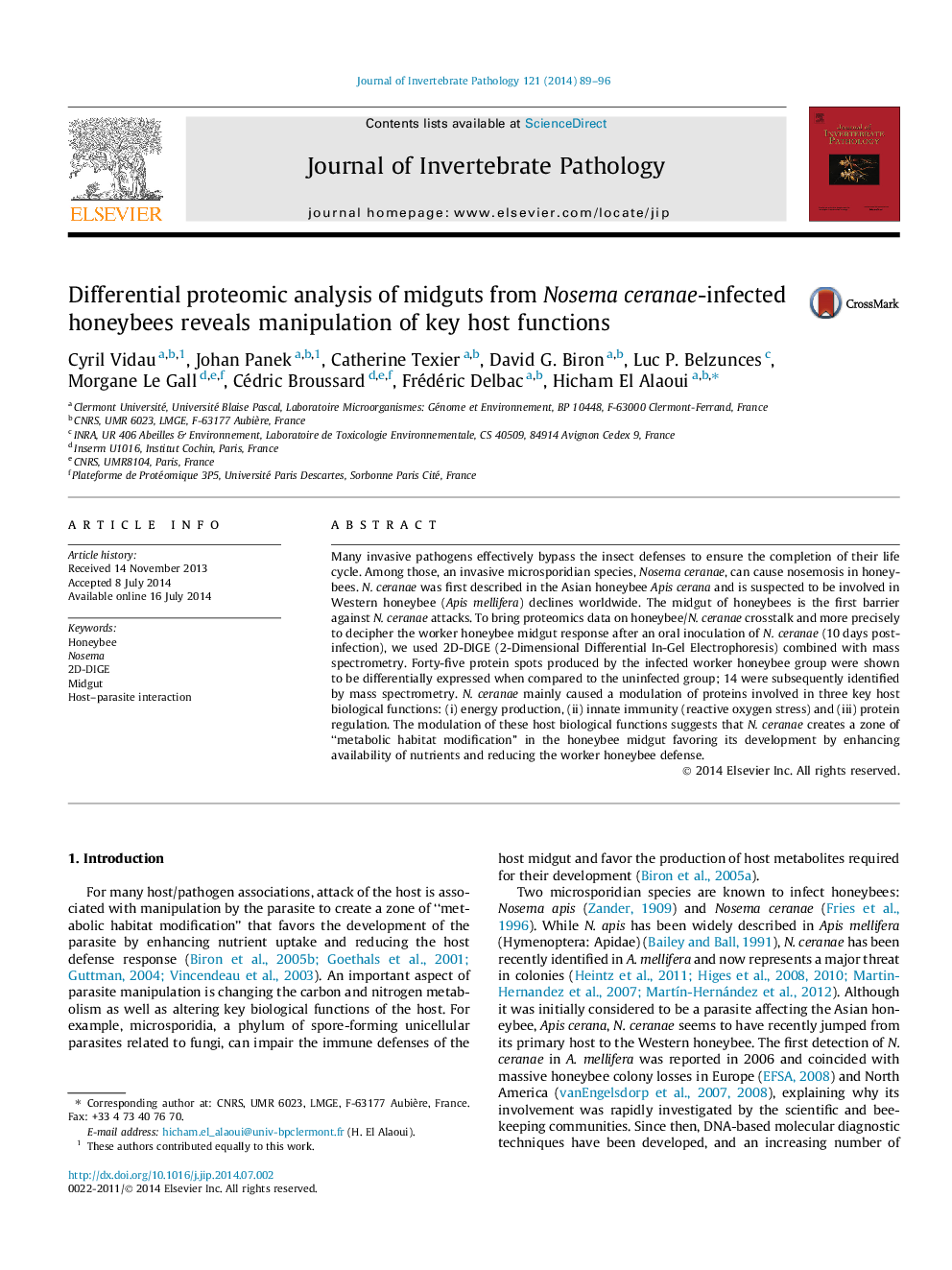| Article ID | Journal | Published Year | Pages | File Type |
|---|---|---|---|---|
| 4557702 | Journal of Invertebrate Pathology | 2014 | 8 Pages |
•Proteins were modulated in the honeybee midgut by the microsporidia Nosema ceranae.•Modulated functions are energy production, innate immunity and protein regulation.•Modulated proteins are linked to nosemosis symptoms.
Many invasive pathogens effectively bypass the insect defenses to ensure the completion of their life cycle. Among those, an invasive microsporidian species, Nosema ceranae, can cause nosemosis in honeybees. N. ceranae was first described in the Asian honeybee Apis cerana and is suspected to be involved in Western honeybee (Apis mellifera) declines worldwide. The midgut of honeybees is the first barrier against N. ceranae attacks. To bring proteomics data on honeybee/N. ceranae crosstalk and more precisely to decipher the worker honeybee midgut response after an oral inoculation of N. ceranae (10 days post-infection), we used 2D-DIGE (2-Dimensional Differential In-Gel Electrophoresis) combined with mass spectrometry. Forty-five protein spots produced by the infected worker honeybee group were shown to be differentially expressed when compared to the uninfected group; 14 were subsequently identified by mass spectrometry. N. ceranae mainly caused a modulation of proteins involved in three key host biological functions: (i) energy production, (ii) innate immunity (reactive oxygen stress) and (iii) protein regulation. The modulation of these host biological functions suggests that N. ceranae creates a zone of “metabolic habitat modification” in the honeybee midgut favoring its development by enhancing availability of nutrients and reducing the worker honeybee defense.
Graphical abstractFigure optionsDownload full-size imageDownload as PowerPoint slide
